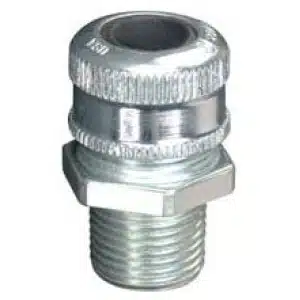Conduit Bushings
Conduit bushings protect wires and cables as they pass through the ends of conduits, preventing damage from sharp edges and a smooth transition. They can be made of plastic, nylon, or metal and are available in various sizes to fit EMT, IMC, or rigid conduit. Some models include insulating liners or grounding features to meet specific code requirements. Conduit bushings are commonly used in junction boxes, enclosures, and terminations.
Since 2005, LiveWire Electrical Supply has been providing quality parts and fast shipping for in-stock circuit breakers, motor control, fuses, switchgear, conduit fittings, and more—including hard-to-find items. Need help finding products? For 24/7 sales assistance, call 1-650-692-0700.

